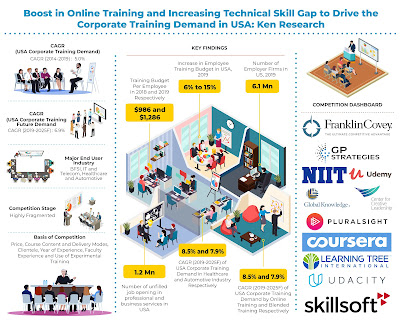The market is driven by increased geriatric population in the region coupled with increase in osteoporosis and osteoarthritis cases. According to Asian development bank, Asia is home to more than 500 million individuals aged 65 years and above as of 2018; this number is expected to reach 923 million by middle of this century.
The decline in costs associated with implants in certain countries has increased the affordability of procedures. This is mainly due to government regulations; however it has negatively impacted certain companies. For instance in India, after the medical device act came into play, the knee implant costs was capped by 69% of the usual amount of USD 2,100.
Mergers and acquisitions in the market are expected to rise in emerging as well as developing markets due to the revised regulations of classifying the medical devices as per the FDA standards. These regulations have made it difficult for global players to export certain items; hence companies are entering market majorly by acquisitions such as Stryker’s acquisition of Trauson holdings in China (orthopedics segment) in the year 2013.
Trade Wars may Hamper Domestic Market Growth: The ongoing trade wars have made it difficult for certain domestic companies to sell their products in US and China. Apart from this, trade war between Korea and Japan might affect the overall medical device sector of both the countries. The recent sanctions on China medical devices imposed a 25.0% tariff on the medical devices segment; hence raising the price of products. The continuation of these sanctions will have a negative impact on Asia Pacific orthopedic device industry as majority of revenue for the region comes from China.
Increasing Focus on R&D: An accelerating shift in Asian domestic manufacturers’ expenditure towards R&D in medical devices landscape is already leading to the increase in the total number of innovative products. There is more competition for innovative programs and less regulations of clinical studies; hence increasing the number of clinical trials. As R&D capabilities of the domestic companies increase, they will be able to offer much large portfolio of products such as their international competitors. A large number of domestic Asian companies are trying to produce products, which are at par with quality as compared to imported products’ enabling them to charge a better price as compared to earlier products.
Increasing Medical tourism in the Asia Pacific Region: International organizations are beginning to recognize the potential value of the Asian orthopedic device market owing to the continuing expansion of medical tourism. The country has a level of technological sophistication and infrastructure that will enable it to maintain a strong position in this sector. The medical tourism is majorly driven by private sector healthcare providers as they constantly upgrade their technology and infrastructure and provide better healthcare as compared to government in certain regions of Asia Pacific. The trend is further expected to grow over long term.
Analyst at Ken Research in their latest publication ”Asia Pacific Orthopedic Device Market Outlook to 2025 – By Country (China, Japan, India, Korea, RoAPAC), By Type of Treatment (Joint, Spine, Trauma and Orthobiology and Sports Medicine); and By Type of End User (Multispecialty and Orthopedic Specialty Hospitals)” observed that the market is still in an infancy growth stage and will witness further growth owing to factors such as rising healthcare expenditure, increase in number of orthopedic healthcare establishments and increasing support by government for the domestic players. Asia Pacific orthopedic device market is expected to register a positive CAGR of 8.2% in terms of revenue during the forecast period 2018-2025.
Key Segments Covered:-
By Country
China
Japan
Australia
Korea
India
Taiwan
Thailand
New Zealand
Singapore
Malaysia
Hong Kong
Vietnam
Pakistan
Indonesia
Bangladesh
Philippines
By Type of Treatment
Joint
By Type of Joint Implant
Knee
Hip
Others (Extremities, Shoulders, Wrist, Ankle and other Joints)
Spine
By Type of Spinal Implant
Fusion
Non Fusion
Trauma
By Type of Trauma Implant
Internal Fixation
External Fixation
Orthobiology & Sports Medicine
By Type of End User
Multispecialty Hospitals
Orthopedic Specialty Hospitals
Key Target Audience
Orthopedic Device Manufacturers
Orthopedic Device Distributors / Traders / Wholesalers
Orthopedic Device Subcomponent Manufacturers
Industry Association
Hospitals
Time Period Captured in the Report:-
Historical Period: 2013 -2018
Forecast Period: 2019-2025
Companies Covered:-
Asia Pacific Region
Stryker
Medtronic
Smith and Nephew
Zimmer Biomet
J&J
Key Topics Covered in the Report:-
Asia Pacific Orthopedic Device Market Value Chain Analysis
Asia Pacific Orthopedic Device Market Overview
Asia Pacific Orthopedic Device Market Trends
Asia Pacific Orthopedic Device Market Challenges
Asia Pacific Orthopedic Device Market Future Projections
Asia Pacific Orthopedic Device Market Segmentation by Country
Asia Pacific Orthopedic Device Market Segmentation by Type of treatment
Asia Pacific Orthopedic Device Market Segmentation by Type of End User
Competition Analysis of Asia Pacific Orthopedic Device Companies
Country Profiles – India, China, Korea, Japan
For More Information, Click on the Link Below:-
Related Reports by Ken Research:-
+91-9015378249



